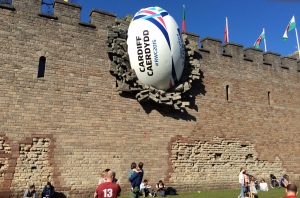Rugby World Cup 2015–A Retrospective
October 31, 2015
How time flies! It was not that long ago that the Rugby World Cup was starting off in England, and Japan was making history by beating the South African Springboks. After 6 weeks and 271 tries, the final has taken place–the All Blacks are triumphant and the first side in history to hold three Rugby World Cup titles.
CJSM Editor Dawn Thompson has composed her thoughts about some of the events associated with this impressive tournament that began September 18 and ended today where it started, at Twickenham, the English home of the sport.
______________________________________________________
I have a confession to make…… I really don’t know very much about the game of Rugby! This is a particularly brave admission as I – a) am pursuing a career in sports and exercise medicine and b) live less than 5 miles down the road from Twickenham where the Rugby World Cup Final is about to take place. What I do know about Rugby however, is that it involves 30 men tearing up and down the pitch with, to the unknowing eye seemingly few rules, inflicting quite horrendous injuries upon themselves before brushing themselves off and continuing on.
I’m sure of course there is much more to it than that and the above demonstrates that I clearly need to sit down and do what all medics do best which is study the topic! In the mean time though I can’t help but find watching the rugby interesting, not just from a sports point of view but from an injury perspective.
Rugby players are often selected based on height with players such as ex Welsh player Shane Williams, at only 5ft7in often facing prejudice early in their career. 11 years ago in 2004 the average height of an All Black back-line player, was 6ft, today its stands at 6ft2in. Weight has also increased, the current wales center Jamie Roberts weights 17 stone compared to his counterpart in the 1970s who weighed in at 14 stone. Players are getting faster and stronger and this is probably in part due to the professionalism of the sport, understandably players train to be the best they can.
So far during the current tournament over 20 players have left early as a result of injuries. World Rugby has stated that ‘”Injury rates at the elite level of the game have not increased since 2002.” They went on to say Read more of this post





